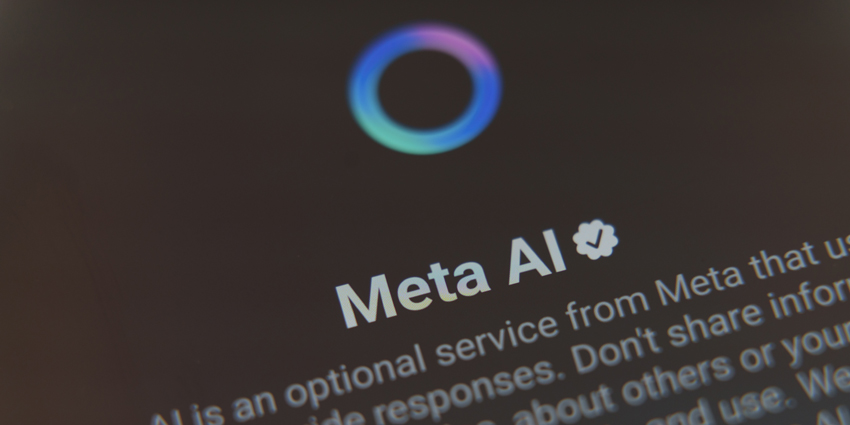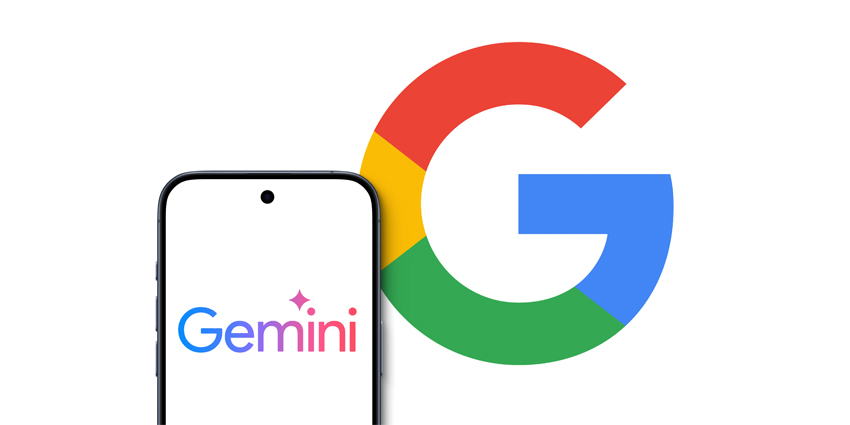Right now, pretty much every major tech leader is going all-in on AI-powered future. But few companies have built an ecosystem as massive, or versatile as Google. In 2025, Google Enterprise AI solutions aren’t just limited to intelligent search, or assistants in Workspace.
Google says its mission is to make AI useful for everyone – and it’s definitely making progress. For the last 20 years, the company has experimented, tweaked, and fine-tuned. It’s built custom large language models, AI cloud infrastructure, development tools – the works.
Whether you’re running a scrappy startup or a global enterprise, Google wants you to have access to AI that actually works, scales, and adapts to your needs. Plus, it’s not tying companies into proprietary systems either. The Vertex AI platform now supports more than 200 models besides the ones built by Google itself.
So, what does Google Enterprise AI actually bring to the table in 2025? Here’s your complete guide to all the models, tools, and infrastructure the tech giant has to offer.
Google Enterprise AI: A Deep Dive into Google’s Portfolio
Google’s Enterprise AI toolbox is massive, and it just keeps getting bigger. In 2025, companies will have access to a full suite of Gemini multimodal language models, ranging from the ultra-efficient Gemini 1.0 Nano to the state-of-the-art Gemini 2.5 Pro. But Gemini is just the tip of the iceberg.
Want to build your own custom AI solutions and agentic tools? Vertex AI has everything you need – including a comprehensive “Model Garden” and agent builder. Looking for a model you can run on a single GPU? Google’s Gemma model makes AI accessible to anyone.
Then there’s Google’s AI cloud architecture, dedicated hardware, and countless task-specific tools, like Veo for video generation, Codey for coding, and Chirp for speech analysis.
Here’s a closer look at the main pillars of Google’s Enterprise AI mansion.
Vertex AI: Google’s AI Development Platform
Launched as Google’s flagship AI development platform, Vertex AI has really grown up in the last year or so. This toolkit combines various machine learning and AI tools into a single platform, giving builders all the resources they need to design custom AI tools and AI agents.
Within the Vertex AI Studio, users can try out hundreds of different foundation models, focused on text analysis, image creation, code, video – you name it. The Vertex AI agent builder comes with a dedicated agent development kit and built-in tools like an RAG engine, APIs, and a host of pre-built models within the “Agent Garden”.
Vertex AI even includes tools for building “responsible AI” systems. There are features for model explainability, fairness, and drift detection; Vertex helps enterprises build trustworthy systems that won’t end up on the wrong side of regulation or reputation.
The best part? Vertex AI is deeply integrated with Google Cloud’s entire suite. Whether your data lives in BigQuery, Looker, or an old warehouse database, Vertex AI can talk to it, learn from it, and start making smart predictions almost immediately.
Plus, you can tap into as many external AI models as you like, too – more than 200 as of 2025, so there’s nothing stopping you from building the perfect custom bot.
Google Gemini: The LLM Family
Gemini is Google’s AI crown jewel. It’s a family of multimodal foundation models that are now running circles around traditional AI systems. Baked into virtually every Google experience, Gemini models can help users create content, analyze data, or just collaborate more effectively.
The Gemini suite (just like the collection of GPT models from OpenAI) has evolved a lot in just a couple of years. The company started with Gemini 1.0 in 2023, introducing the Nano, Ultra, and Pro models – all built to be multimodal from the ground up.
Next, we got Gemini 1.5 Pro, Gemini 1.5 Flash, and Gemini 2.0 Flash-Lite, with new audio and image recognition capabilities, as well as deep reasoning features. Now, we’re moving into a new era of Gemini solutions, with Gemini 2.0 Flash, Gemini 2.5 Flash, and Gemini 2.5 Pro – all built with agentic AI capabilities. These latest models represent a massive shift from Google.
The company isn’t just creating generative AI tools anymore; it’s designing models that can demonstrate step-by-step thinking processes and make intelligent decisions based on connected data. Gemini 2.5 is already earning a lot of positive feedback from users, and it’s surpassed the performance of similar models on performance benchmark exams, like “Humanity’s Last Exam”.
Google Enterprise AI Models: The Supporting Cast
Google’s Gemini suite might be getting the most attention right now, but let’s not forget all the other, more “focused” tools Google has to offer. PaLM 2 is still one of Google’s most popular tools. Although it’s been eclipsed by Gemini in some areas, it’s still a good choice for lightweight NLP tasks, coding, and small-scale deployments.
On top of that, we have solutions like:
- Imagen: Google’s family of text-to-image models, capable of generating high-quality images, rendering text, and even adapting to ethical AI guardrails.
- Chirp: A pre-built family of universal speech models, trained on over 12 million hours of speech, and ready to recognize more than 100 languages.
- Codey/Stitch: Google’s selection of handy models designed to generate code based on natural language descriptions – ideal for developers and app builders.
- Gemma: The family of lightweight, open models from Google. There are a few distinct models here, like CodeGemma, RecurrentGemma, and PaliGemma.
- Veo: Google’s answer to AI-powered video generation. Google Veo can create, remix, and extend short videos from prompts or clips.
Google also offers models fine-tuned for specific industries or purposes. MedLM is fine-tuned for the healthcare industry, LearnLM for education, and SecLM for security-specific tasks.
All of these models, and many more, are available through Model Garden, Google Cloud’s one-stop shop for foundation models. What’s especially empowering is that businesses can:
- Test models side-by-side
- Customize them with as little as 100 rows of data
- Use prompt tuning, LoRA, or full fine-tuning depending on budget and needs
- Deploy them instantly in Vertex AI
The platform also includes third-party models (like Claude 3 from Anthropic and Llama 3 from Meta) so teams can compare and choose what fits best.
Google Enterprise AI: The Infrastructure
Google isn’t content just rolling out models or agent-building tools. It’s dealing with the infrastructure side of AI adoption too. At the heart of Google’s infrastructure are its custom-designed Tensor Processing Units (TPUs) – chips purpose-built for machine learning.
One of the newest arrivals, TPU v5e (Ironwood), is something special. With up to 2x the performance per dollar over previous models and flexible configurations for both training and inference, it’s built for serious enterprise workloads.
You can train a large language model with it. Or deploy thousands of inferences at the edge. It’s designed to be affordable, powerful, and highly scalable across tasks – whether you’re building voice assistants, content moderators, or climate simulations.
If you’re not quite ready for TPUs? That’s fine too. Google’s infrastructure supports NVIDIA GPUs, high-performance CPUs, and even Arm-based Tau VMs, giving you the flexibility to pick what works best for your use case (and your budget).
Not to mention, Google has built out one of the largest and most sophisticated cloud networks in the world. With over 200 points of presence and the lowest-latency network backbone of any major cloud provider, your models are smart, efficient, and fast.
You can scale your AI models exponentially, with Google Kubernetes Engine, and the Jupiter data center network, designed for high-intensity workflows.
Google keeps things flexible, too. The company contributes to countless open-source AI projects. It even helps companies reach their ESG goals.
All Google Cloud infrastructure, including the data centers running Google Enterprise AI, is on track to be fully carbon-free 24/7 by the end of the decade.
Google Enterprise AI: Integrations with Existing Systems
You shouldn’t need to rip out your entire tech stack just to sprinkle in some AI. Fortunately, Google Enterprise AI solutions are designed to work with what you already have.
Google gives you a toolkit that feels more like Lego than legacy. You’ve got a massive suite of APIs covering everything from natural language understanding to image classification, video intelligence, translation, document parsing, and more. They’re RESTful, they scale seamlessly, and you can usually get them running with just a few lines of code.
Got a chatbot that needs to be smarter? Add the Gemini API. Want to process insurance claims from scanned PDFs? Use Document AI. Running a supply chain that needs better demand forecasting? Let Vertex AI crunch the numbers behind the scenes.
Plus, Google is building AI into everything it does, at the core. Workspace already includes access to Gemini models – intended to enhance productivity and collaboration.
Thanks to the latest Gemini integrations, Workspace tools now offer live writing suggestions, auto-summarization, tone adjustment, meeting note generation, and even visual storyboarding. Google Search is also AI-powered (you’ve probably noticed the AI overviews).
The tech leader is even adding AI into it’s extended reality strategy. The new Android XR ecosystem empowers developers building virtual, mixed, and augmented reality devices to tap into Gemini models and new innovations (like Project Astra).
Plus, with Project Mariner, AI is available right inside of your team’s browsers. Basically, if you already interact with Google’s tools in any aspect of your business, you can access AI right in the flow of work, without any connection headaches.
Google Enterprise AI Deployment Models
Rolling out AI at the enterprise level is like launching a rocket. You want power, yes, but you also want control, direction, and safety. That’s why the deployment options available for Google Enterprise AI are so important. The great thing about Google is it doesn’t believe in one-size-fits-all.
This is a company that knows every organization has its own priorities and adoption issues to address, that’s why it offers:
- Cloud-native deployments: Fully managed, scalable services running entirely in Google Cloud. This is the go-to for organizations that want simplicity and scalability right out of the gate.
- Hybrid deployments: Some AI workloads run on-premises, while others live in the cloud. Perfect if you have sensitive data that can’t leave your local environment.
- Edge deployments: Running AI inference directly on devices or near the source of data. Useful for industries like retail, manufacturing, and transportation,n where low-latency decisions are mission-critical.
- Multi-cloud interoperability: Google plays nice with others. Whether you’re on AWS, Azure, or a private cloud, Google’s APIs and open standards make it possible to integrate without re-architecting your world.
Google AI Deployment Considerations: Security, Governance and More
If you’re worried about governance and security when it comes to rolling out Google’s AI solutions – the company has got you covered there too. You’ve got tools for:
- Explainability (What’s the model thinking?)
- Fairness auditing (Is it treating everyone equitably?)
- Data lineage tracking (Where did this data come from, and where is it going?)
Google’s security stack covers pretty much everything an enterprise user needs too. The company produces tools that are ISO, SOC, GDPR, HIPAA, and FedRAMP compliant. It even uses AI to protect your systems, with AI-enhanced threat detection solutions.
If security isn’t your biggest concern, but budget is, Google stands out again. Not every AI use case needs massive computing power. Google gives you choice and control, whether you want to invest in a cloud TPU or a simple GPU-powered system.
You can use autoscaling strategies to align spend with usage, so you’re not paying for anything you don’t use. Plus, with parameter-efficient fine-tuning for models like Gemini, you can save money on massive training costs while still unlocking incredible performance.
Building a Google-Centric AI Strategy
Developing your own Google-centric AI strategy isn’t just about instantly adopting the latest tools and keeping up-to-date with all the news and model enhancements.
It’s about weaving intelligence into the fabric of your organization in a way that’s thoughtful, ethical, and, most importantly, aligned with what your business is trying to achieve.
Here are some top tips for a strong deployment strategy:
- Anchor Every AI Initiative to a Business Outcome: The best AI strategies don’t start with “Let’s use Gemini.” They start with: “We’re losing customers to long wait times.” Or “Our team spends 30 hours a week cleaning data.” Once you’ve named the problem, the path becomes clear. Gemini 2.5 Pro could power a smarter support agent. Imagen might auto-generate campaign visuals. Veo could automate training video production. Let the pain point guide your tech choices.
- Get your Data House in Order: No AI model, no matter how smart, can thrive with bad data. Invest early in organizing your data with tools like BigQuery, Looker, and Dataplex. Build governed, structured, accessible pipelines. That way, when your AI shows up to learn, it doesn’t trip over missing values and inconsistent labels.
- Empower People, Don’t Replace Them: The goal of AI isn’t to replace your team; it should amplify and augment them. Train your teams on prompt engineering. Encourage experimentation without fear of failure. Give employees permission to try, break, learn, and improve. Adoption accelerates when AI is seen as a teammate, not a threat.
- Think Modular over Monolithic: With Google Enterprise AI, you can adopt incrementally. Maybe start with AI in Workspace. Then experiment with custom Gemini apps. Then scale to full-on generative AI agents. That way, you learn as you grow.
Shaping Tomorrow with Google Enterprise AI
Google’s enterprise AI landscape is huge, and it’s just going to get bigger. Like its competitors, Google is convinced that AI is the future of how we work, innovate, and grow. However, unlike some alternative companies, Google is going all-in on making AI truly accessible to everyone.
If you’re looking for an AI partner that works with you to adapt models to your business needs, rather than forcing you to start from scratch, Google could be the ideal option.








